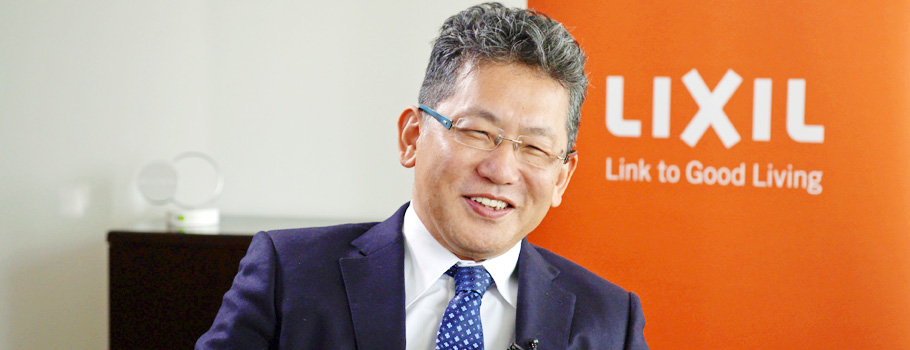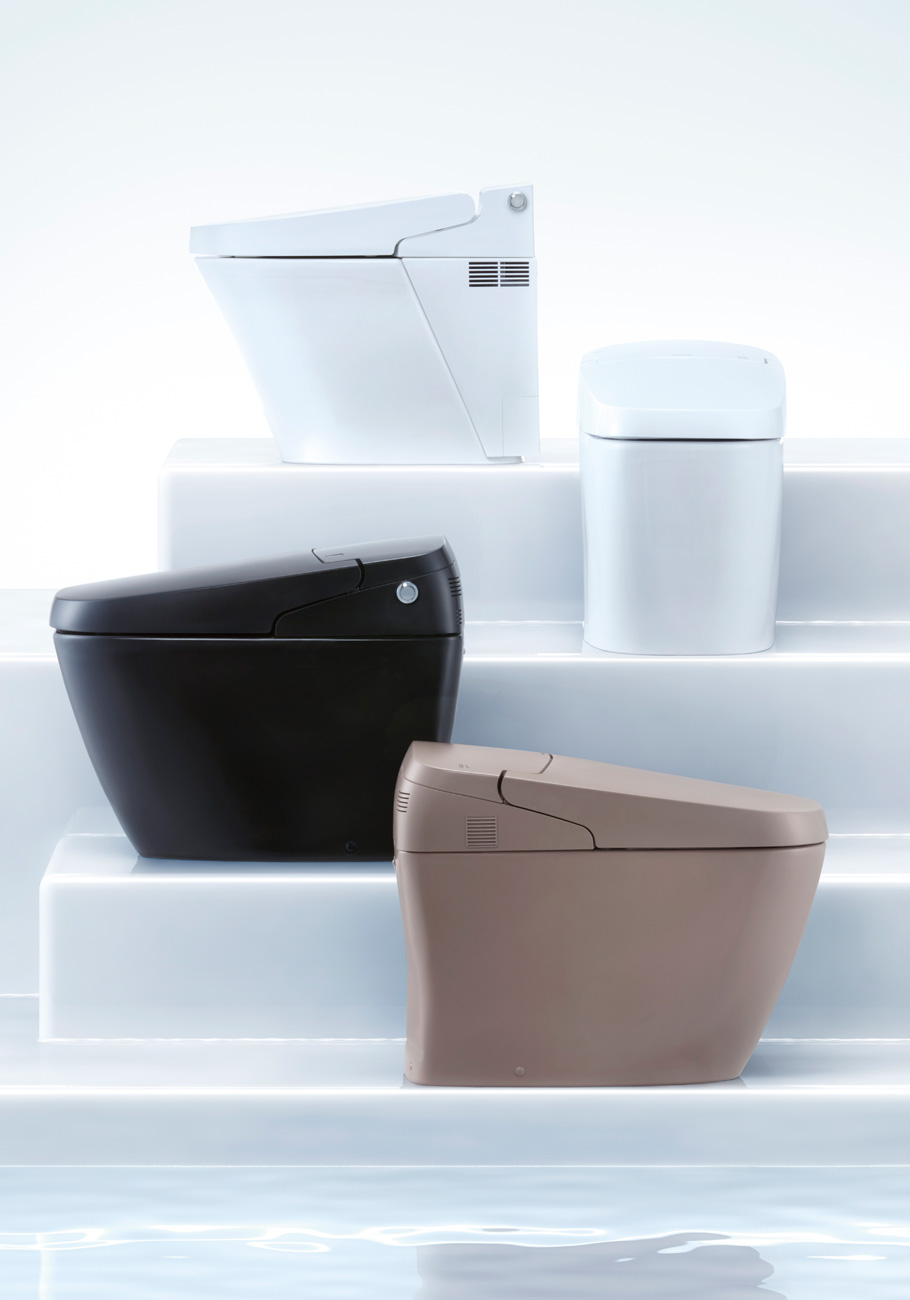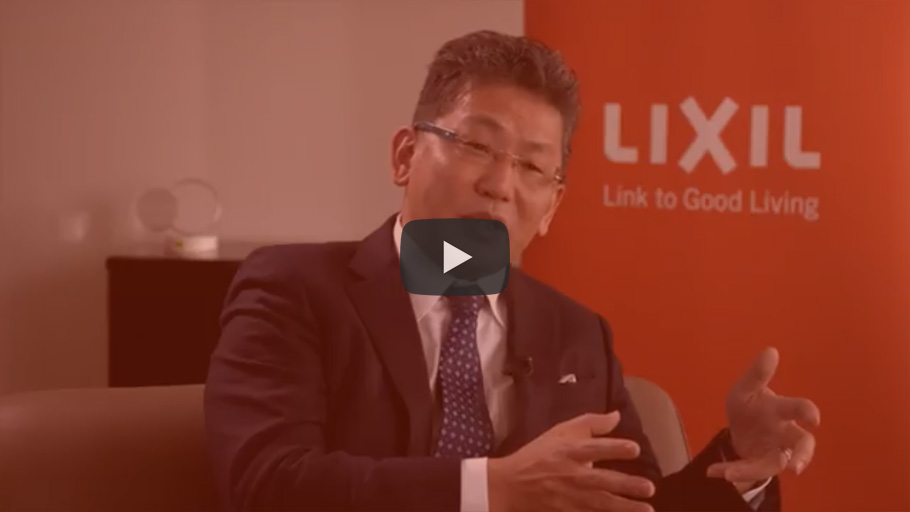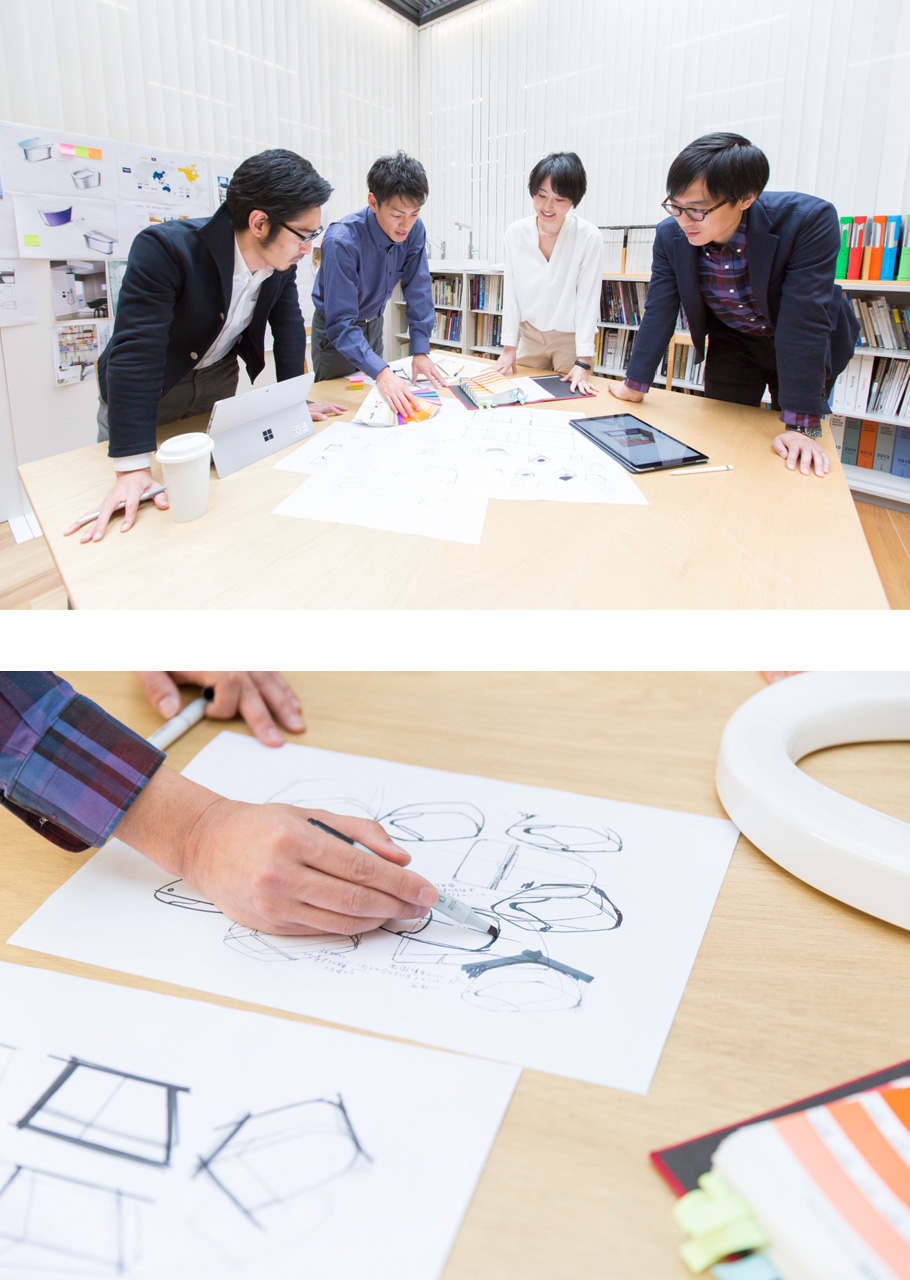LIXIL makes pioneering water and housing products that solve everyday, real-life challenges, making better homes a reality for everyone, everywhere.
- Global Site
-
- English
- Japanese
- Brand Sites
Global
- Global Site
-
- English
- Japanese
- Brand Sites

Updated: Jun 05, 2018
After two years of streamlining the organization, cleaning up the balance sheet, and adjusting LIXIL's far-flung portfolio of assets, President and CEO Kinya Seto believes he is now ready to take the water and housing products company to higher profitability and global growth.
His strategy for this growth is two-stage, based on having highly differentiated products in mature markets such as Japan, Europe, and the U.S. With success in these competitive markets, the company will be positioned with the technology and differentiated products to fuel longer-term growth in high potential developing markets around the world.
"Our strength is in making differentiated products, and differentiated products are appreciated in mature economies first," Seto said in a recent interview. "I feel that Japan, Europe, and the U.S. are very important markets for the short term. But in the long term, China, India, and Africa will become more important," he added.
 LIXIL was first formed in 2011 from a lineup of companies that included Japan's INAX and TOSTEM brands. Leading global names were soon added over the next few years. U.S. sanitary ware leader American Standard, whose history dates back to 1875, was purchased in 2013, and German design icon GROHE was added in 2014. LIXIL now has operations in 150 countries and over 70,000 employees worldwide. It has also seen significant growth in its overseas business, rising to nearly 25%1 of total revenue in the financial year ended March 2018 from just 4.2% six years ago.
LIXIL was first formed in 2011 from a lineup of companies that included Japan's INAX and TOSTEM brands. Leading global names were soon added over the next few years. U.S. sanitary ware leader American Standard, whose history dates back to 1875, was purchased in 2013, and German design icon GROHE was added in 2014. LIXIL now has operations in 150 countries and over 70,000 employees worldwide. It has also seen significant growth in its overseas business, rising to nearly 25%1 of total revenue in the financial year ended March 2018 from just 4.2% six years ago.
But Seto is now shifting his focus to improving profitability. His new three-year Medium Term Plan, which officially began in April 2018, focuses on structurally reforming the company to produce highly differentiated products and services that will capture higher margins. In turn, he believes this will make the company more competitive and enable it to grow sustainably in the future.
But to lay the foundation for the strategy, the first critical step was to optimize the business portfolio and strengthen the balance sheet.
"Simplifying the organization and improving the balance sheet are a must. It's not that it's difficult or easy, you have to do it," he said.
To achieve this, he has cut the net debt to EBITDA (earnings before interest, taxes, depreciation, and amortization) ratio to an estimated 4.0 times in the financial year ended March 2018 from 5.3 times just two years previously. His target under the medium-term plan is no less ambitious, with a goal of getting debt down to less than 2.5 times EBITDA by March 2021.
At the same time, the core earnings ratio has gone from 3.7% in 2016 to 4.5% in the financial year ended 2018 with a three-year target of 7.5%.
As part of this initial drive, a flatter organization meant reducing the number of senior executives by 50% in 2016, with Seto taking direct control of the linchpin water and housing product businesses.
Among these, what the company calls its "LIXIL Water Technology" business is seen by Seto as having the most immediate global potential, while its "LIXIL Housing Technology" business is more focused on the home market of Japan although with ambitions to grow in other Asian countries in the near-to-mid-term.
 "If I look at the whole portfolio, I believe we have a better chance to make profits in the short term with the water technology business; toilets, baths, kitchens, faucets," said Seto, discussing the opportunities for synergy between GROHE, American Standard, and INAX. "If we have a better idea in one region, we can easily leverage it in other markets," he said.
"If I look at the whole portfolio, I believe we have a better chance to make profits in the short term with the water technology business; toilets, baths, kitchens, faucets," said Seto, discussing the opportunities for synergy between GROHE, American Standard, and INAX. "If we have a better idea in one region, we can easily leverage it in other markets," he said.
In looking at the water business, LIXIL believes it can post a compound annual growth rate for revenue of 5% over the next three years in Europe and the Americas, with a 16% jump in the fast growing markets of Asia Pacific.
Differentiation also offers the chance to charge a premium price. The plan is to get well-designed products that can attract higher-end consumers.
"I would like to transform this company to be a more design-oriented company," Seto said. "We have good technology but we need more sophistication in design. This is where we spent the most time and resources in the past two years, so I think we are developing our design ethos very quickly."
 Seto said that this approach has already seen success, pointing to the shower toilet developed by INAX and now ubiquitous in Japanese bathrooms. GROHE localized the design and brought the concept to Europe, where it turned into a major seller for the company. The strong design-driven approach that has been successful at GROHE is now being applied across the water technology portfolio and the next step is integrating these principles within housing technology.
Seto said that this approach has already seen success, pointing to the shower toilet developed by INAX and now ubiquitous in Japanese bathrooms. GROHE localized the design and brought the concept to Europe, where it turned into a major seller for the company. The strong design-driven approach that has been successful at GROHE is now being applied across the water technology portfolio and the next step is integrating these principles within housing technology.
He also believes that the mature markets offer not only immediate returns but also a chance to refine products in the most demanding markets that will then be well-positioned to succeed in the evolving medium-term targets.
"In markets like India, some Asian countries, and the Middle East, we see some different opportunities, too. The important thing is that once people learn about better products, any customer can become a demanding customer," he said.
With the global market in mind, Seto has made a number of strategic deals to bring on additional manufacturing capacity, such as the purchase of the ceramics manufacturing group Sentini Sanitarywares in India and ASB Ceramica Dominicana in the Dominican Republic.
He has also bought out minority partners at Grome Marketing in Cyprus and Grohe Dawn Watertechnologies in South Africa. Seto says that buying out minority partners not only ensures a single strategic vision, it also ensures that corporate governance is at the global level.
"When you have to manage a company in a difficult area, you want to control it 100%," he said, adding that different standards of corporate governance cannot be applied in individual countries. "That is not the right thing," he said.
Seto has also not been reluctant to sell operations that do not fit the global strategy, even operations that have been highly successful.
Among the divestitures, LIXIL sold its stake in joint ventures LIXIL-Haier Housing Products and Shanghai Meite Curtain Wall System; sales meant to shift LIXIL toward a higher-end product mix. It has also announced its decision to sell Italy's Permasteelisa, which provides exteriors for some of the world's best-known buildings, such as The Shard in London, and is considered the global leader. Though this transaction is still in the process of closing, Seto believes the divestiture will enable LIXIL to rally its managerial resources around its product businesses.
Seto is committed to executing his strategy at his pace with an eye on the long term. The potential prizes are significant. A recent study by Edinburgh Napier University estimated that with demographic and lifestyle trends in developed and developing countries, the world will need 2 billion more homes by the end of this century.
"If I only focused on meeting quarterly targets, then I am going to miss the most important long-term goal. I'll keep explaining the strategies and plans going forward so they understand and can be with me," he said when asked of investors.
1 Revenue and core earnings for Permasteelisa S.p.A and its subsidiaries have been reclassified under discontinued operations, following agreement to sell its shares in August 2017
Our Stories
- Backing People and Passions to Drive Innovation
- How Toilets in Schools are Catalyzing Change in Communities
- Building the Future by Recycling the Past
- Reinventing Consumer Connections in the World's Largest E-commerce Market
- Tackling Household Water Inefficiency in a Water-Stressed World
- Plugging the Plumber Shortage
- Pioneering Solutions to a Sewage Crisis in Rural Alabama
- Meet the Citizen Developers Changing How We Work
- Design and Brand Identity Transformation at LIXIL
- Three Changes to Prepare Europe’s Sanitary Industry for Growth
- Three Steps to Creating an Inclusive Culture
- From Linear to Circular: Giving Products in Your Home a New Lease of Life
- Crafting Unique Experiences as well as Products
- GROHE X: A Digital Brand Experience
- Design-led Innovation Delivering True Value
- Responsible Use of Plastics
- Empowering our People for an Agile Future
- Turning the Waves of Change into Opportunities
- SATO Tap: a New Handwashing Solution for All
- New Ways of Working Take Flight at LIXIL
- INAX: Rituals of Water
- Refreshing our sanitation targets, standing firm on our commitments
- Developing Attractive and Differentiated Products
- Conserving Water: The New Normal
- Insulating For a Warmer and Healthier Home
- Open Kitchen, Open Communication
- Tackling Open Defecation in India
- Shaping the Future of Faucets, One 3D Layer at a Time
- Bathed in Culture and Tradition
- Remodeling the Housing Market
- LIXIL's AQUA CERAMIC makes bathroom stains a thing of the past
- The Technology of Water
- Tackling Challenges in Global Sanitation and Hygiene
